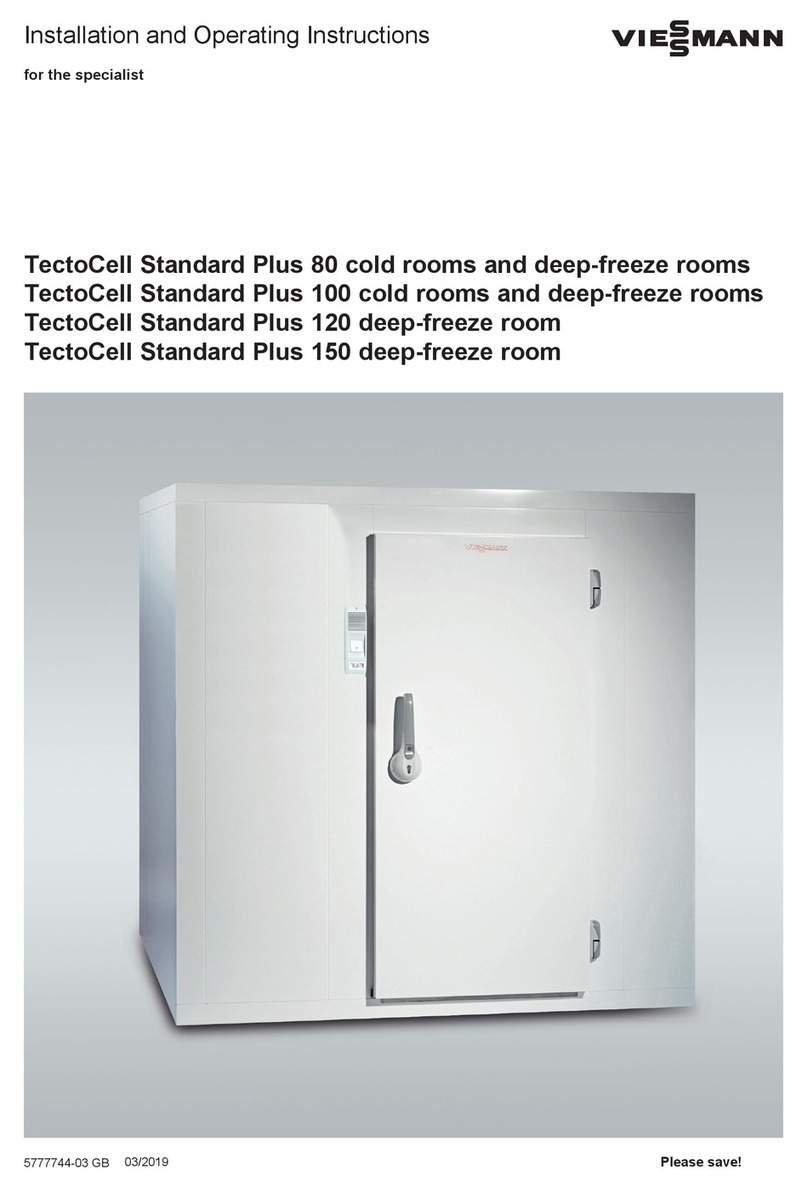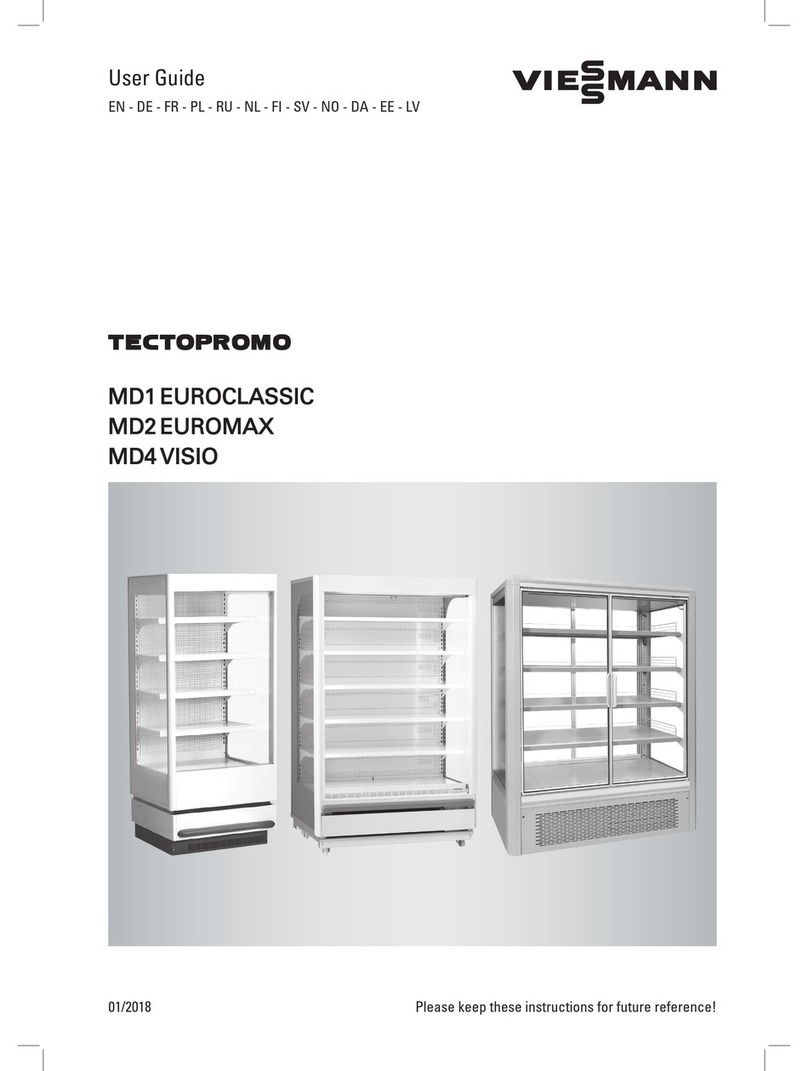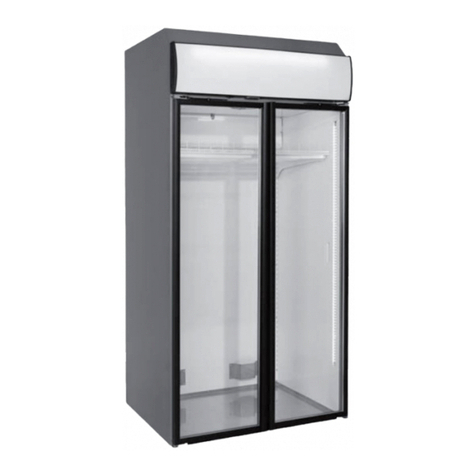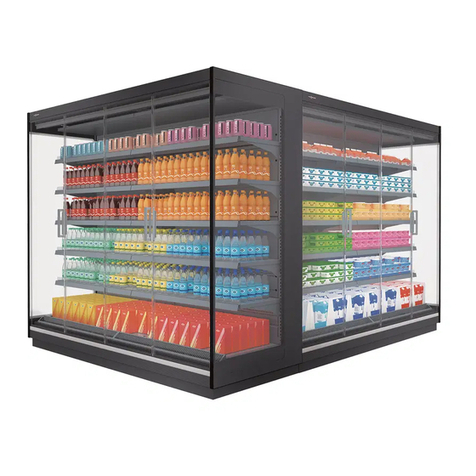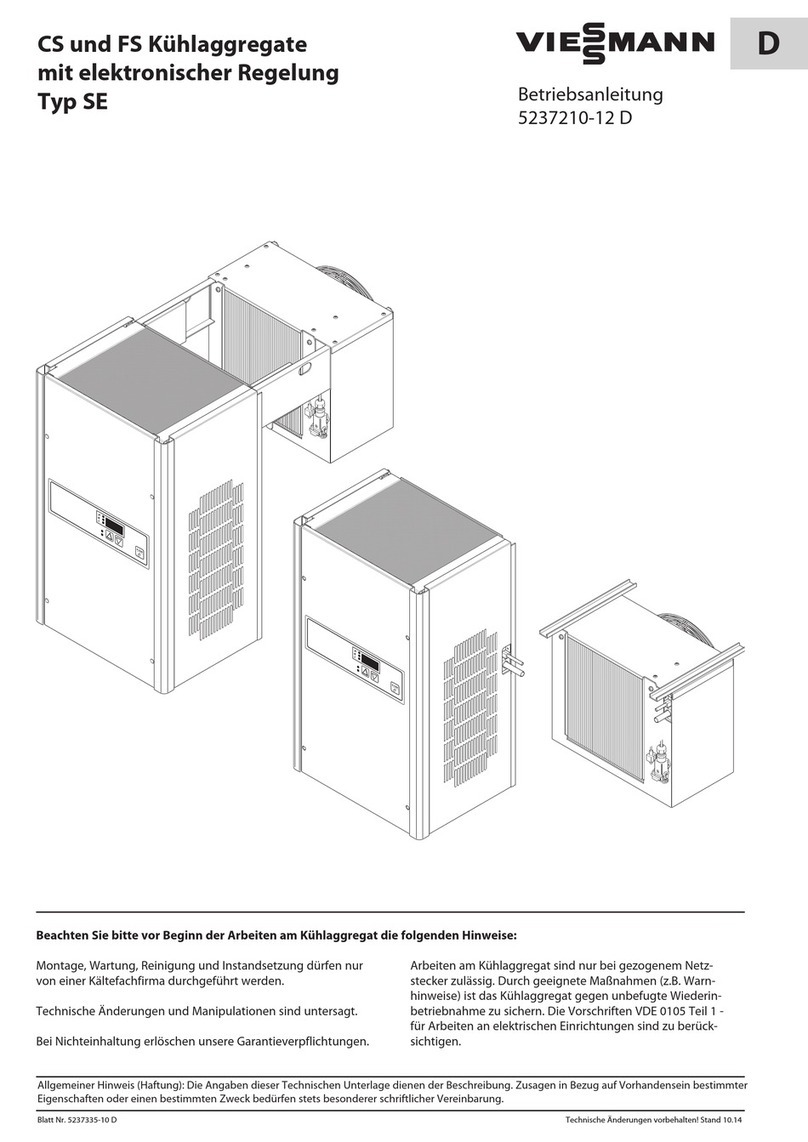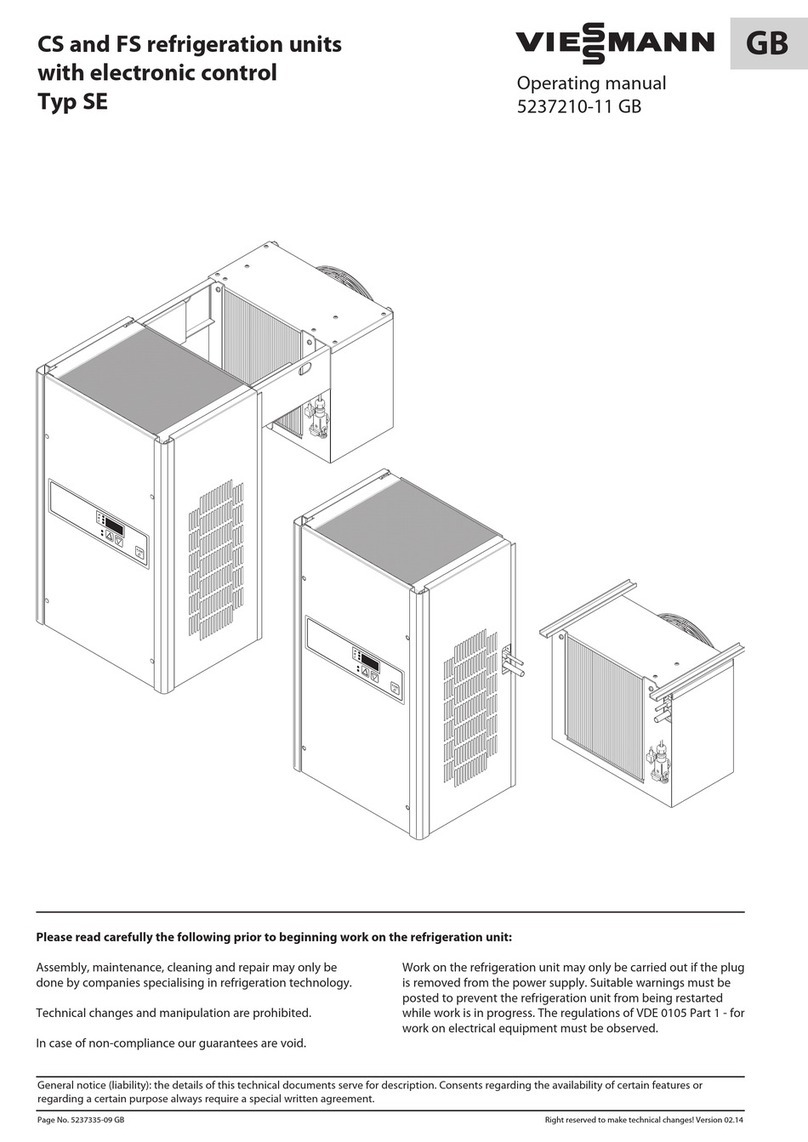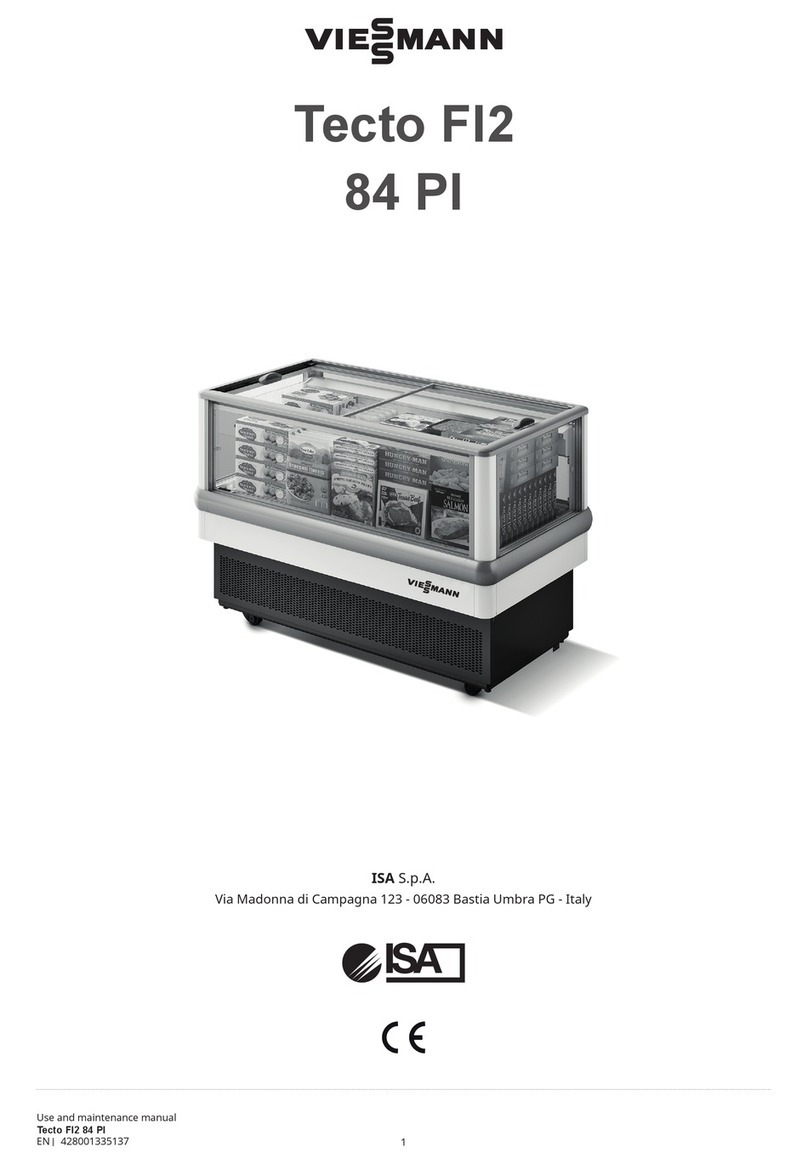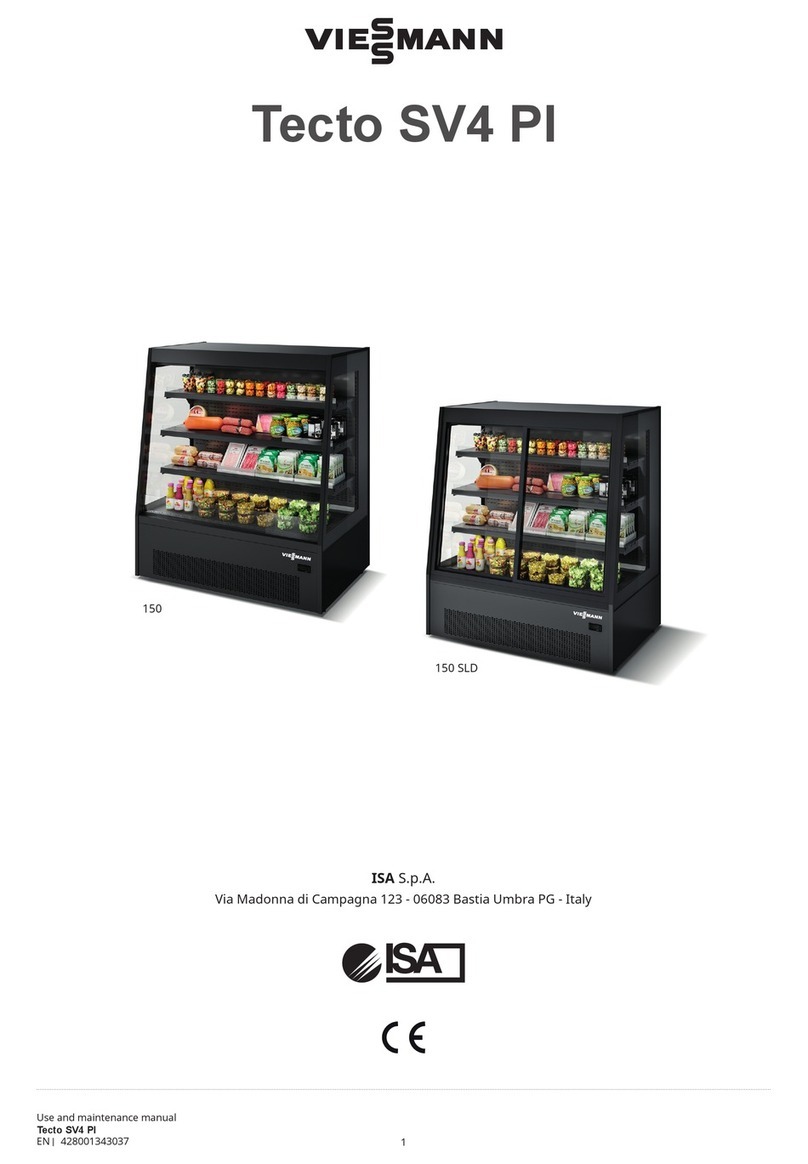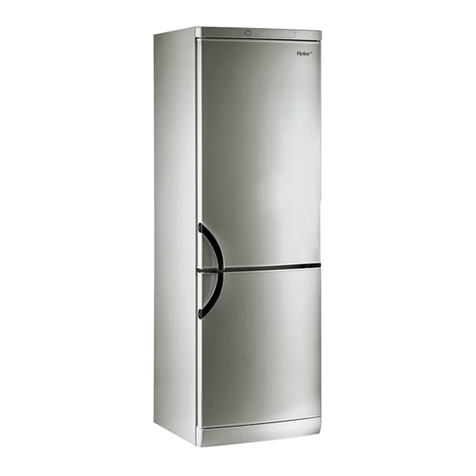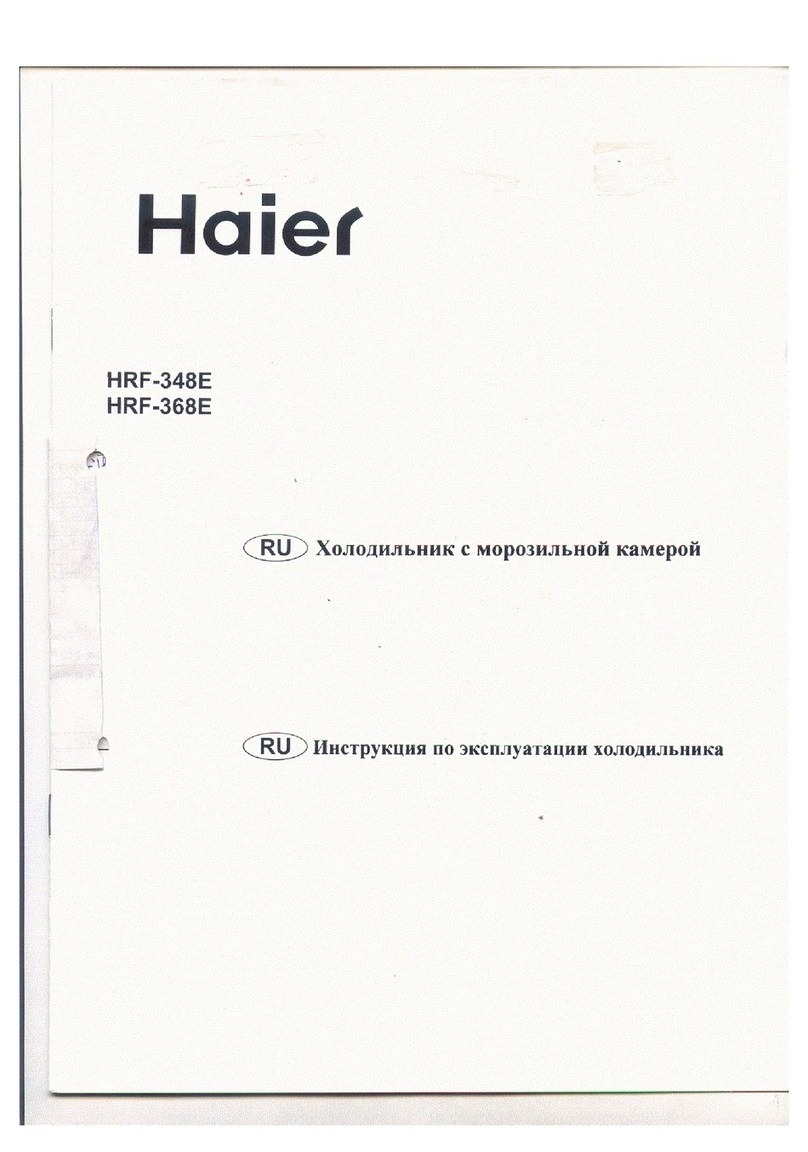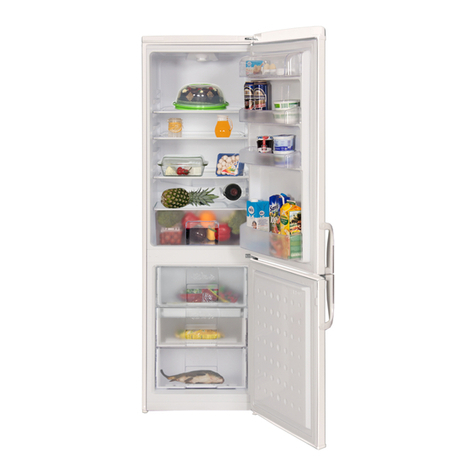Page No. 3-GB 1 - 2.3 We reserve the right to make technical changes!
1. Description
The units are designed for the prescribed temperature
anges. If they are operated outside the prescribed tempe-
rature range for several days, the possibility of a serious
defect on the refrigerating unit cannot be discounted.
1.1 Deep-freeze unit
FS 0900, FS 1200, FS 1400, FS 1800, FS 2400
The units are designed for the cooling of rooms, in which
goods are stored at temperatures of -25°C to -1°C.
1.2 Refrigeration unit
CS 0500, CS 0900, CS 1300, CS 2000, CS 2800
The units are designed for the cooling of rooms, in which
goods are stored at temperatures of -5°C to +19°C.
2. General information
2.1 Excepts from our Warranty conditions
The warranty is valid for 1 year. The period of entitlement
begins on the day of delivery, which must be verified by
the Bill of delivery or Invoice. Within the period of warran-
ty, functional defects attributed to faulty design or materi-
al defect will be rectified at no charge.
Claims in excess of these, in particular those related to
consequential damage, are excluded.
We will accept no liability for damages, which result from
improper or unauthorised utilisation, faulty installation
or commissioning on the part of the customer or a third-
party, natural wear and tear, faulty or negligent handling,
chemical, electro-chemical or electrical influences, as long
as the fault cannot be attributed back to actions taken
on our part, non- compliance with Installation, Operating
and Maintenance Instructions, improper modifications or
repair work on the part of the customer or a third-party,
as well as the influence of replacement parts from third-
party origin.
Warranty entitlement is forfeited, as well, if the refrigera-
tion circuit has been opened by unauthorised personnel,
access has been made to the system assembly, or the
serial number has been changed or made unrecognisa-
ble.
2.2 Standards and regulations
The Wall-hanging unit has been built and inspected
according to the standards and regulations valid at the
time of manufacture.
It complies with the
EMC Directive 2004/108/EC,
machinery directive 2006/42/EG.
The unit has been inspected at the factory for refrigerati-
on circulation leakage and for function.
2.3 Requirements for installation area / Intended use
The Refrigeration unit must not be assembled outdoors.
The Refrigeration unit must be setup to ensure the free
intake and discharge of air. In the event the use of air
ducts is unavoidable, project planning must be made by
a refrigeration specialist company.
Sufficient free space must be provided for in front of
the Refrigeration unit intake and discharge openings in
order to warrant a good air flow:
- minimum 250 mm in front of all intake and
exhaust openings
If it is not possible to maintain this clearance, then suf-
ficient air flow must be warranted by means of suitable
measures (air deflector, air ducts, additional ventilators).
The unit must not be deployed in areas where strong
strong magnetic interfering impulses are anticipated or
in the vicinity of transmitting antennas.
The unit must not be setup in an explosive atmosphere!
